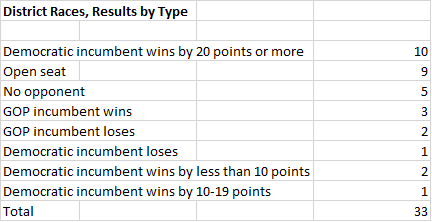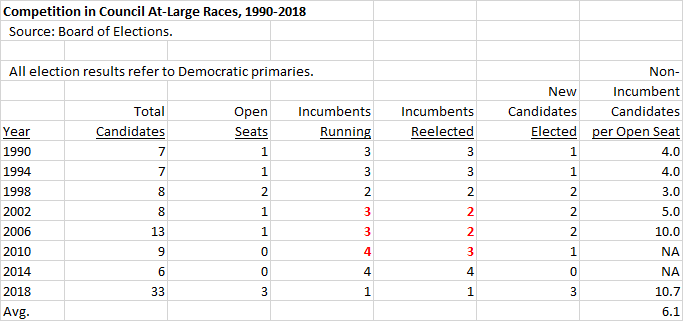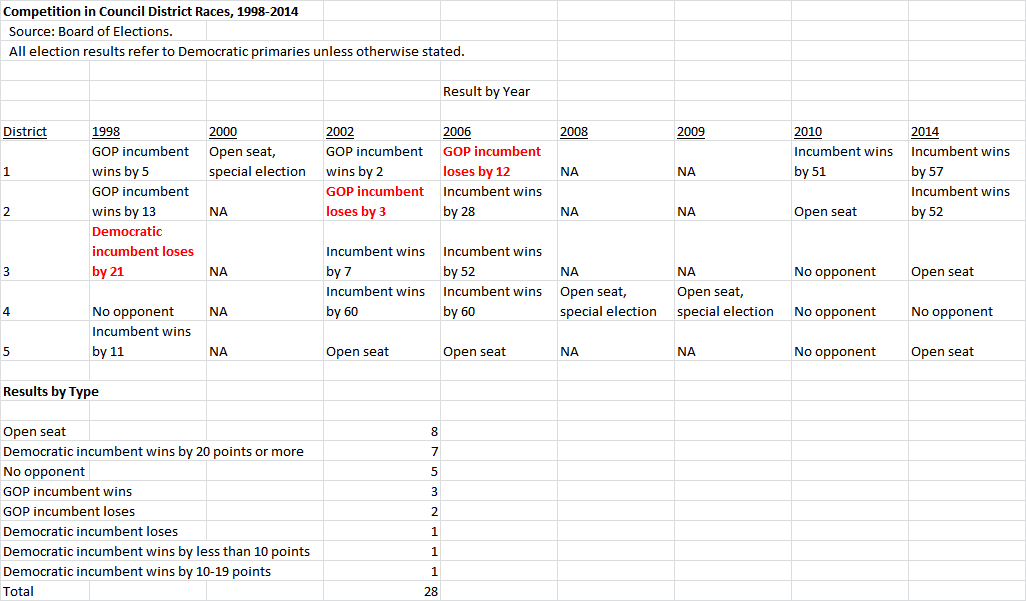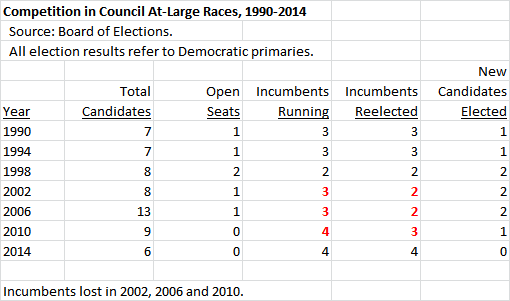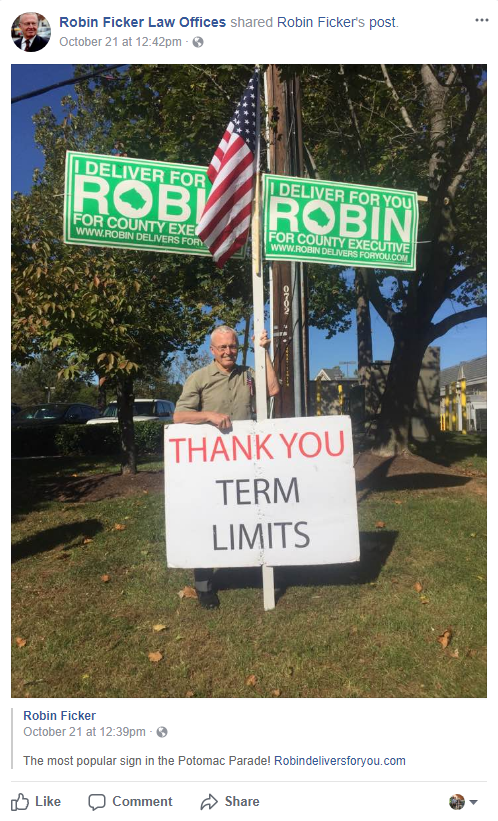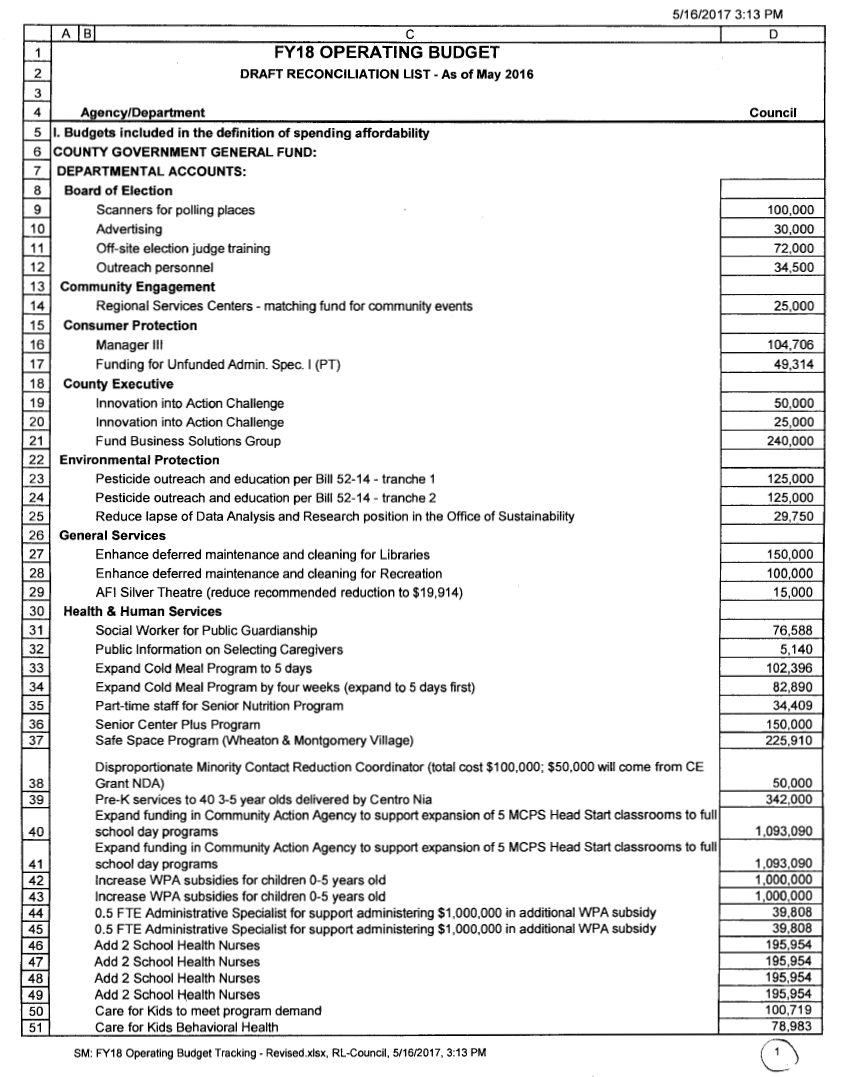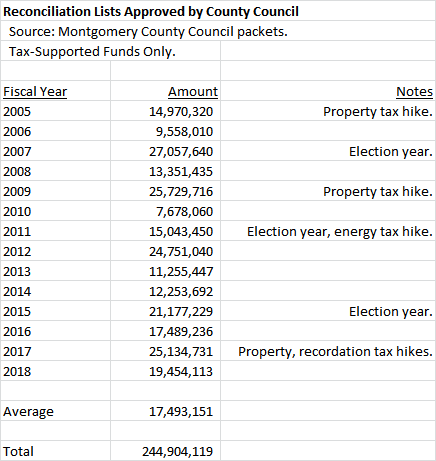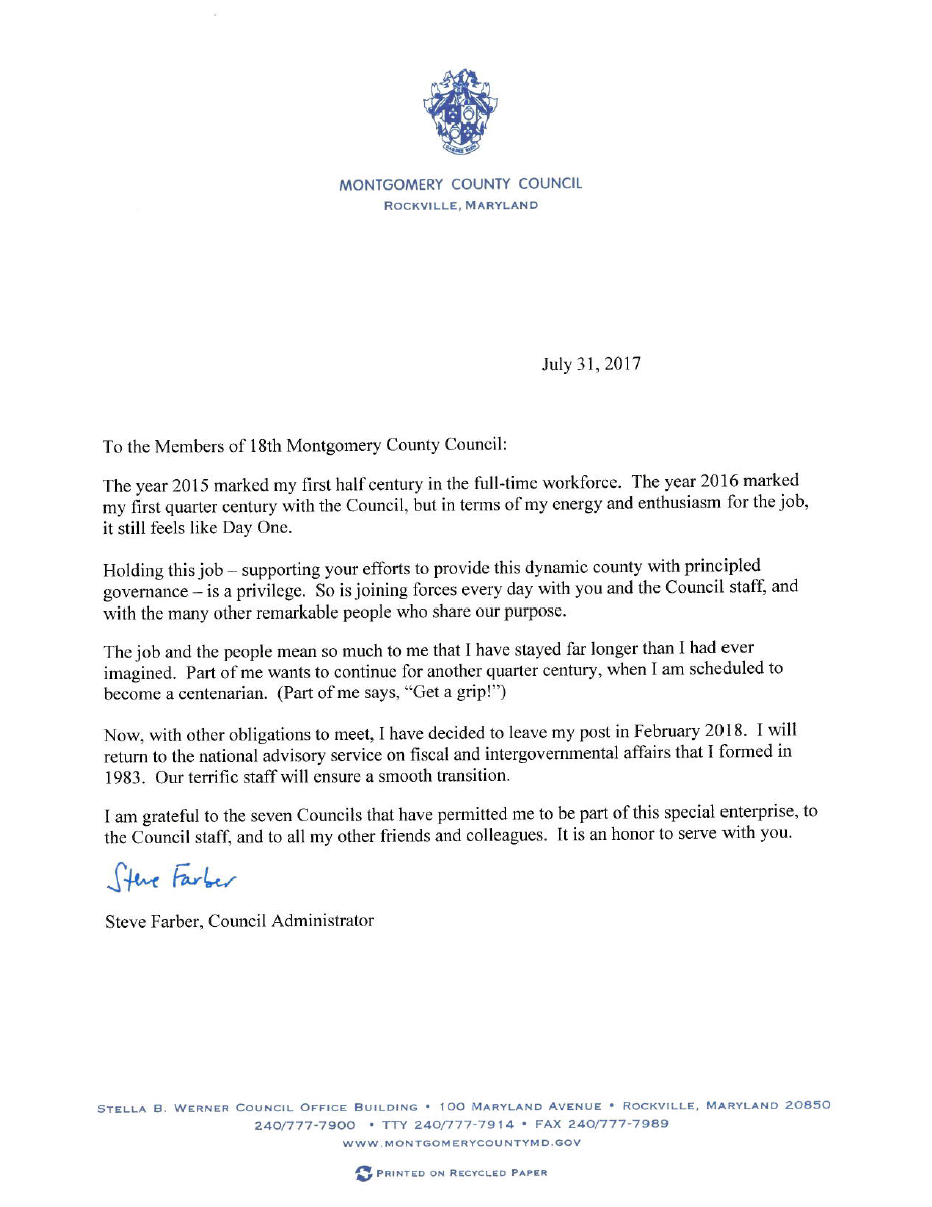By Adam Pagnucco.
Ever wonder why some politicians stay in office waaaaaay too long? One reason is that some of them believe they are truly essential and that government would collapse without them. We will give them this: some politicians really do leave a lasting mark, and even sometimes for the better! But the true operations of government depend on legions of competent, honest and experienced public servants who are almost totally unknown to the public. These are the essential men and women who keep the trains of government running on time. And in Montgomery County, the most essential man of all is unquestionably Steve Farber.
Farber has one of the most mundane titles of all time: council administrator. At first glance, such a title connotes unglamorous tasks like emptying garbage pails, cleaning windows, wiping the dais and changing toilet paper rolls. But in fact, the position is crucial to the proper functioning of the County Council and Farber excels at it. Unfortunately for all of us, he is retiring.
Part of Farber’s job is to be the leader of the council’s Fifth Floor staff. These employees are not part of the personal staff retained by Council Members in their offices but are rather central, merit system analysts who advise the institution as a whole. They are subject matter experts, each overseeing the operations of a few departments and/or agencies on behalf of the council. When legislation is introduced, briefings are held or budget items are considered, the Fifth Floor analyst who covers the relevant subject areas gathers pertinent information and writes it up for the council to consider. Occasionally, the analyst will make recommendations with the understanding that Council Members have the final word. At its best, the Fifth Floor acts as a check and balance on the views of the departments and agencies overseen by the council. It is hugely important for Council Members to have their own independent sources of expertise; otherwise, they might tend to see primarily what the Executive Branch and the agencies want them to see. The Fifth Floor predated Farber’s arrival, but he expanded their ranks, protects their independence and champions their contributions.
But Farber is so much more than the merit staff’s leader. He is the ultimate consigliere, the quiet adviser in the shadows who knows all and says little – at least in public. His immense and largely secret power derives from three sources.
Institutional Knowledge
Farber has been at the council since 1991 and has an incredible memory. No matter what the council deals with in the present, he has seen something like it in the past and recalls it like yesterday. Names, dates, policies, documents – whatever it is, Farber either knows it or knows how to get it. Few people in county government compare to him on this measure and no Council Member comes anywhere close. That gap in knowledge can put Farber in the driver’s seat when no one can really see that he’s driving.
Cautious Use of Political Capital
Another secret of Farber’s success is that he spends his political capital very carefully. He is concerned with budgetary and fiscal issues, especially ones affecting long-term sustainability and the bond rating, but it is otherwise rare for him to weigh in directly on legislation or policy issues. By picking his spots carefully and not squandering his power, Farber maximizes his ability to influence the big picture events that he cares about most.
Finding Money for the Reconciliation List
Every year, the council proposes to add millions of dollars to the Executive’s recommended budget. Their vehicle is the reconciliation list, which is a ledger of spending additions and reductions that must be balanced out at the end. One of Farber’s tasks is to find a way to pay for this list. No one else in the building fully understands how he does this. His unique, encyclopedic knowledge of the county budget enables him to locate money under the couch cushions that few others know about. Try as they might, it is impossible for the Executive Branch to hide money from Farber. He never funds the entire reconciliation list – and constantly warns the Council Members (often futilely) not to overstock it – but he finances enough of it that the council is usually satisfied. It’s an incredible and invisible source of power.
How does he pull all of this off? It’s a great mystery, but sometimes there are clues. First, he never gets involved in politics, NEVER. He never takes sides in spats between Council Members or tries to steer politically sensitive things like who gets selected as Council President. Second, he never takes credit for anything. If you listen to Farber, he has never had a good idea. Instead, it’s Council Members from the past who have done great things – even if they really originated with Farber. When he talks to current Council Members, he will remind them of these past accomplishments and suggest similar monumental undertakings. If a Council Member agrees, then the idea becomes his or hers – and not Farber’s. The consigliere will then praise the enlightened ideas of the boss! Third, he never makes arguments based on personal or political concerns, only on facts – of which he is the undisputed master. And fourth, his discretion is second to none. The CIA could waterboard every person in the council building and Farber is the one who would never talk. Everyone knows this. That’s why they talk to him. And that’s why the consigliere knows more than the rest of them.
For all his greatness, Farber has had ups and downs like everybody. For many years, he was a lonely voice calling for fiscal restraint, occasionally joined by Council Members Phil Andrews and Marilyn Praisner. That earned him the resentment of union leaders and agency heads who prefer loose purse strings. Farber got his way during the Great Recession, when the council had little choice but to cut spending and abrogate labor contracts, and he played a big role in saving the county’s bond rating. But the subsequent easing of fiscal pressure allowed the council to start spending again, resulting in the Giant Tax Hike and the passage of term limits. If the council had listened to Farber all along and passed regular modest, restrained budgets, there’s a chance those things may not have happened.
County residents have benefited mightily from Farber’s service even though the huge majority of them have no idea who he is. His dedication to facts over rhetoric, his devotion to sound fiscal management, his work to have the council act as a real check on the Executive Branch and above all his iron integrity have made county government more honest and efficient than it would otherwise be.
Farewell to MoCo’s Essential Man.

